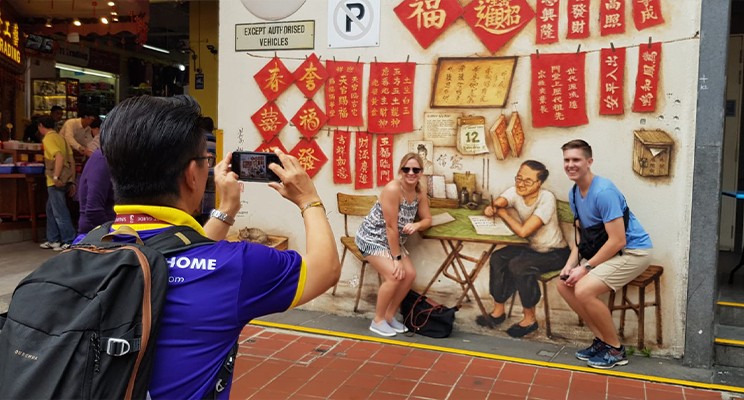The Impact of Tourism on the Social Fabric of Small Indigenous Communities

Introduction
Tourism has become one of the most significant global industries, contributing to the economies of both developed and developing countries. For small indigenous communities, tourism can be a double-edged sword. While it can bring economic opportunities, it can also pose risks to their cultural integrity, social structures, and environmental sustainability. In this article, we explore the complex relationship between tourism and small indigenous communities, examining both the positive and negative impacts on their social fabric and overall well-being.
Economic Benefits of Tourism for Indigenous Communities
Tourism can provide a vital source of income for small indigenous communities, particularly those living in remote or rural areas where economic opportunities may be limited. By showcasing their culture, traditions, and natural landscapes, indigenous communities can attract visitors and generate income through activities such as guided tours, cultural performances, crafts, and hospitality services. This influx of revenue can significantly improve access to healthcare, education, and infrastructure, helping to raise the standard of living within the community.
For some communities, tourism has enabled them to maintain their traditional ways of life while also benefiting from modern economic systems. Tourism can also promote the preservation of local traditions, as cultural expressions that are attractive to tourists—such as dance, art, and craftsmanship—are often valued and supported by the revenue they generate.
Cultural Preservation and Transformation
While tourism can provide financial benefits, it also raises concerns about the preservation of cultural heritage. Indigenous communities often face the challenge of balancing cultural preservation with the pressures of commercial tourism. The growing interest in indigenous traditions and lifestyles can lead to the commodification of culture, where rituals, customs, and practices are altered or staged to appeal to tourists, sometimes losing their original meaning and significance in the process.
In some cases, tourism can also lead to the appropriation of indigenous culture, where outsiders adopt cultural symbols, clothing, or traditions without understanding their true significance or history. This can result in the erosion of the community’s authentic cultural identity and the exploitation of its heritage for profit.
Social Dynamics and Community Displacement
Tourism can disrupt the social fabric of indigenous communities in both direct and indirect ways. The arrival of tourists can change local social dynamics, particularly if tourism is not well-regulated or if the community is not involved in the decision-making process. Outsiders may bring with them different values, attitudes, and behaviors that may conflict with the traditional ways of the indigenous people, leading to social tensions and divisions within the community.
Moreover, as tourism grows, there is a risk that indigenous populations could be displaced from their own land, particularly if land and resources are repurposed for tourism infrastructure, such as hotels, resorts, and tourist attractions. This displacement can lead to the loss of ancestral lands and the disruption of traditional livelihoods, such as farming, fishing, or hunting, leaving communities more vulnerable to economic and environmental changes.
Environmental Impact of Tourism on Indigenous Territories
Many indigenous communities live in ecologically sensitive areas, such as forests, deserts, or coastal regions, where natural landscapes play a key role in their cultural and spiritual practices. Tourism, especially mass tourism, can have detrimental effects on these environments, leading to pollution, overuse of natural resources, and habitat destruction.
Tourists may unknowingly damage fragile ecosystems through activities such as littering, wildlife disturbance, and overconsumption of local resources like water or firewood. In extreme cases, the growth of tourism infrastructure can lead to environmental degradation, making it difficult for indigenous communities to continue their traditional ways of life or access the resources they need to survive.
Social Inequality and Power Imbalances
While tourism brings economic benefits, it can also exacerbate social inequalities within indigenous communities. Often, the wealth generated by tourism is not equally distributed, and power imbalances can emerge between community leaders, entrepreneurs, and ordinary members. In some cases, tourism revenue is concentrated in the hands of a few individuals or families, leading to increased social stratification.
Furthermore, the introduction of external actors, such as multinational corporations or government agencies, can result in indigenous communities losing control over their land and resources. These actors may prioritize profit-driven motives over the needs of the community, further deepening social inequalities and undermining indigenous autonomy.
Cultural Tourism and Ethical Considerations
Cultural tourism, which specifically focuses on the experiences, traditions, and lifestyles of indigenous communities, raises important ethical considerations. It is essential for tourism operators, government bodies, and indigenous communities themselves to ensure that tourism is managed in a way that respects indigenous rights and cultural integrity. In many cases, indigenous communities are working to take control of the tourism industry within their territories, striving to create responsible, community-led tourism initiatives that preserve their heritage while still benefiting economically.
Ethical tourism practices emphasize the need for fair compensation, cultural sensitivity, and the involvement of indigenous peoples in decision-making processes. By promoting sustainable tourism models that prioritize community well-being, environmental conservation, and cultural preservation, tourism can become a tool for empowerment rather than exploitation.
Conclusion
The impact of tourism on small indigenous communities is complex and multifaceted. While tourism has the potential to generate economic benefits and promote cultural preservation, it also carries risks that can disrupt social structures, exacerbate inequalities, and lead to environmental degradation. To ensure that tourism has a positive impact on indigenous communities, it is crucial for policies to prioritize ethical practices, community empowerment, and environmental sustainability. By fostering respectful, inclusive, and sustainable tourism models, we can help protect the social fabric of indigenous communities while enabling them to thrive in a globalized world.










